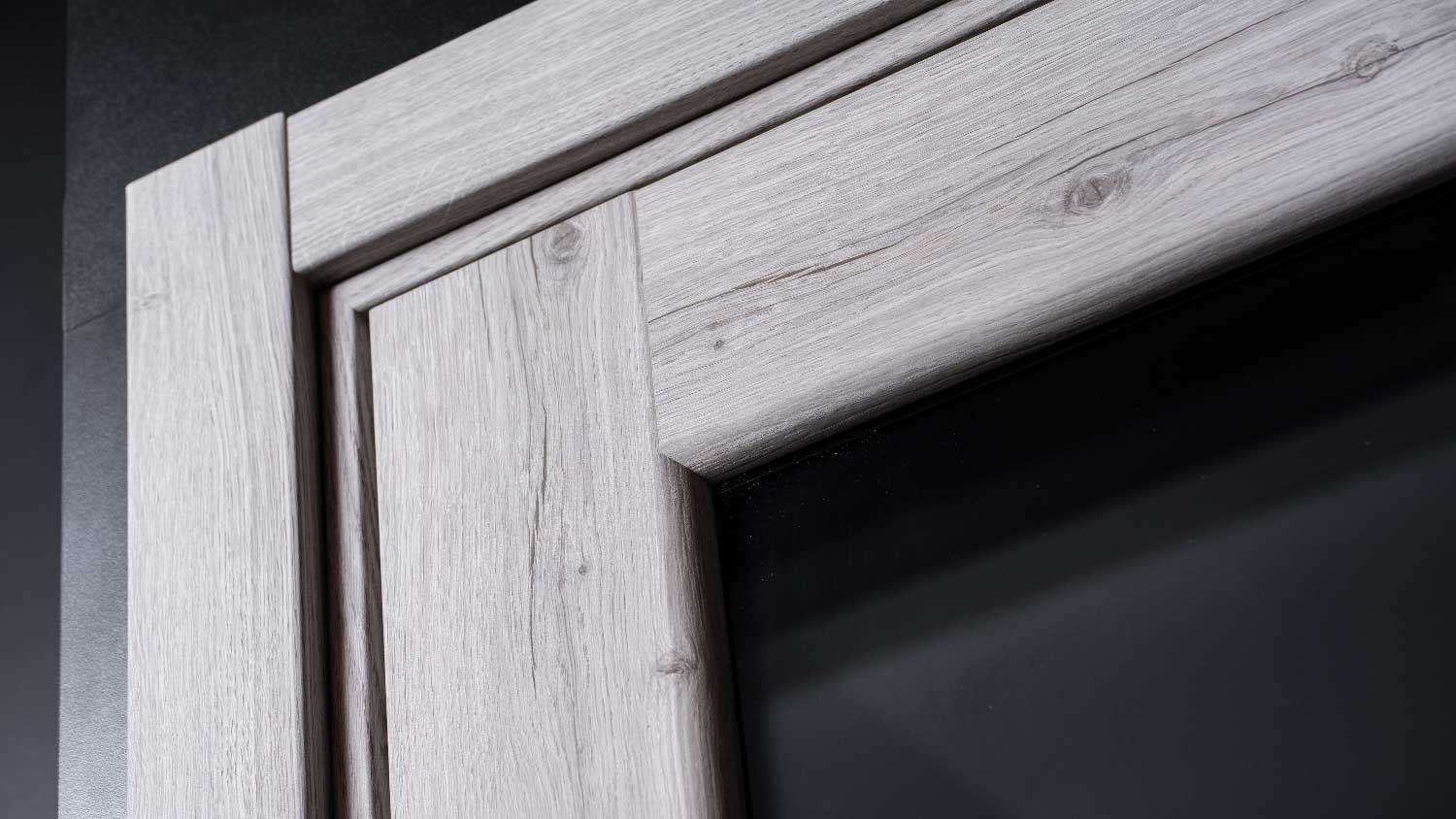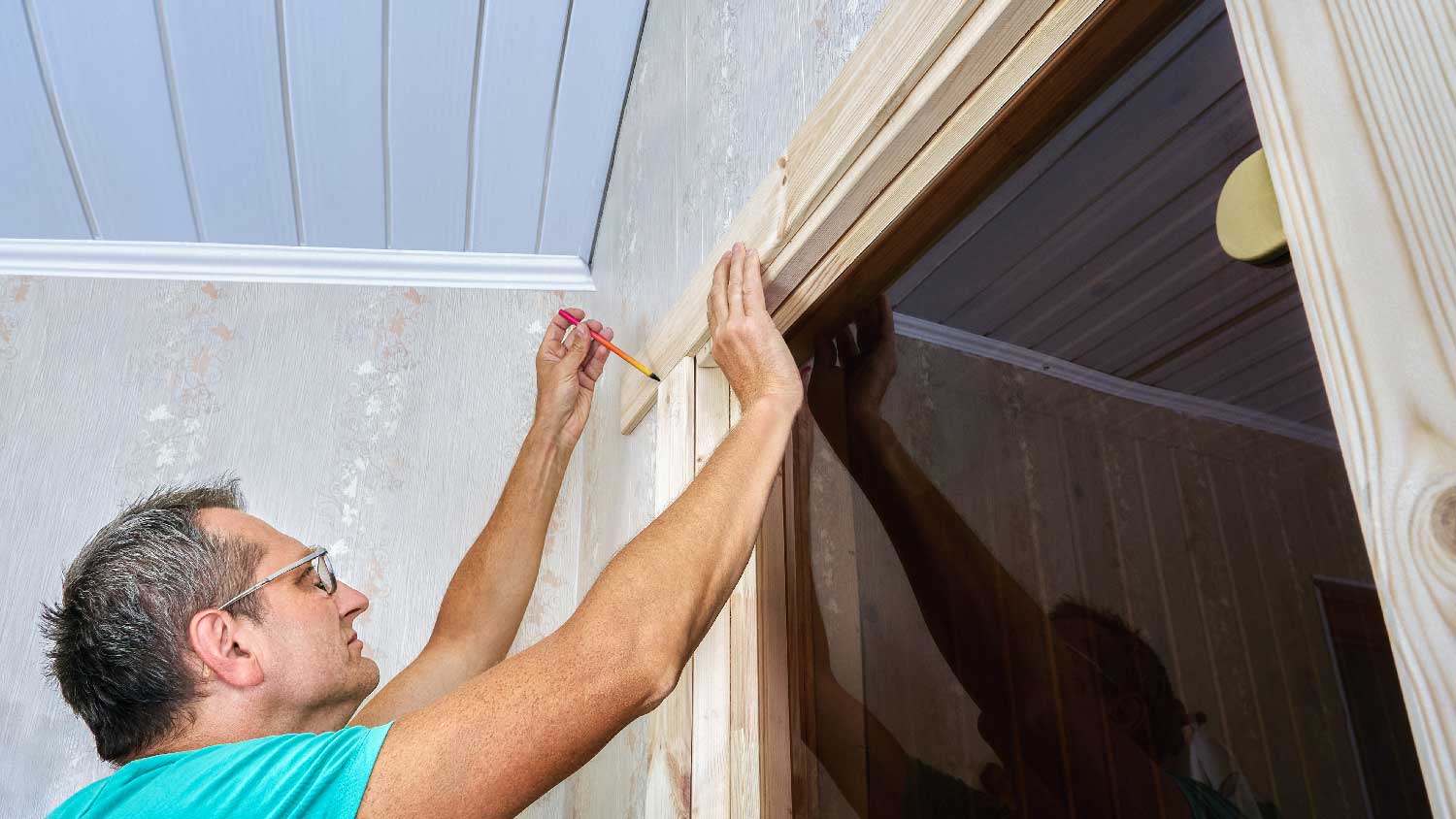
Door repairs cost around $250 on average but can range from $50 to $700 depending on the type of door, type of repair, materials, and project scope.
Split jamb doors prove that sometimes two is better than one


Split jamb doors are a type of pre-hung door.
A split jamb is made from two pieces of wood instead of one.
These are installed when a wall isn’t plumb, or the rough frame is wider than standard.
Split jamb doors are more suited for interior doors.
There are a surprising amount of options when you want to install a door. If you also need to replace the framing, a split jamb door is an excellent option to make the installation smoother. This guide covers everything you need to know about this type of pre-hung door.
Split jamb doors are a type of pre-hung door. Unlike traditional pre-hung doors, which have a door jamb made from a single piece of wood, split jamb doors have a jamb made from two pieces of wood that fit together with a tongue and groove joint.
Two-piece jambs are used for a few reasons, mostly when a standard door would have an awkward fit or require difficult adjustments. You can use a split jamb when:
You have an older home with irregular walls: Sometimes, walls in older homes aren’t plumb and have an irregular thickness. A split jamb door offers a better fit for these situations.
Your rough frame is wider than standard: If the rough frame in your door opening is wider than standard, a split jamb door can help bridge the gap.
You’re looking for an easier installation: With a split jamb door, you install the jambs separately before hanging your door. This allows for quicker adjustments if your wall is less than perfect, making the installation process a whole lot simpler.
You need to replace the doorframe: If you need a new doorframe, installing a pre-hung door means you won’t have to build your frame. If you don’t need a new doorframe, you can choose a slab door and leave the existing framing in place.

A split jamb door contains all of the parts of a standard door plus a few unique added features. Since it’s a pre-hung door—and not a slab door—these parts are partially assembled for a more straightforward installation process.

Most split jamb doors include:
Door slab: The door has predrilled holes for the hinges and lockset if it’s not already attached.
Split jamb: This is the half of the jamb with the groove.
Main jamb: This is the half of the jamb with the tongue.
Casing: The door casing should already be attached to the jambs, so you don’t have to do it during the installation.
Hardware: Many pre-hung doors come with the hardware, including hinges and strike plates.
Shims: Some doors come with shims to help secure the doorframe.
Split jamb doors come in various materials, are adjustable for customization, and are easier to repair. If one side of the jamb is damaged, you can replace the section instead of replacing the whole thing.
The main difference between a split jamb and a solid jamb is the construction. A split jamb is made from two pieces of wood that fit together, while a solid jamb is made from a single piece. The construction impacts the performance, but a local door installer can help you decide which works best for your home. The main differences include:
Durability: Solid jambs are studier and preferred for external doors because they can better protect against the elements.
Versatility: Though you can trim solid jambs to size, a split jamb is easier to adjust to different wall sizes.
Repairs: Split jamb doors are less complex to repair than solid jamb pre-hung doors because you can replace parts of the frame rather than the entire frame.
Ease of installation: If you have standard-sized openings and straight walls, a pre-hung solid jamb door is simpler to install because there aren’t as many pieces. If your walls are kind of wonky, a split jamb door is easier to install.
New construction: If you’re installing a door in new construction, solid jamb doors are sturdier and will work in spaces with precise measurements. However, a split jamb door could be a better option in an older home where the walls could have irregular measurements.

For most homeowners, door installation costs $500 to $2,000. That said, if you’re handy and have prior experience, you can install the door yourself. Here’s how to install a split jamb door:
Measure the rough opening of the doorway: If the walls aren’t plumb, you may need to make adjustments.
Take apart the jambs: The jambs come nailed together for shipping purposes. Remove the nails and separate the two jambs.
Install the split jamb: First, install the split jamb (the piece with the groove). Make sure the casing is snug against the wall.
Install the main jamb: Use shims to secure gaps in the framing, then install the main jamb by sliding the tongue into place over the groove in the split jamb.
Keep in mind that some installations are more complicated than others. If your wall has irregularities that make installing a door difficult, hire a professional who installs doors to get the job done quickly and correctly.
Company came to look at my garage door that was off track. They also said I needed a brace on the other garage door. They put the door back on track, and I paid to install the brace. The technician told me I needed a new garage door opener, and it would cost $1000. Red flags went off in...
Window depot replaced all 14 windows in my house, front door and added a new back door. They did a wonderful job with some tricky windows in this old house. They were quick but efficient and cleaned up everything inside and out. I have already passed their contact information on to my...
Provider was quick and responsive in scheduling the service... very accommodating. Once the technician arrived, he looked at the door less than a minute and said it was in great shape. He WD-40'd all the springs and wheels... took about 5 minutes all-in, with some tips on keeping the door...
They are great to work with, super quick to respond and schedule an appointment. Their work is really great as well, I'm very happy with the results. My house has a huge amount of windows and French doors and they are in and out in about an hour.
We had them remodel our kitchen several years ago and were so pleased we asked them to remodel our master bathroom. They are always punctual, from the initial home visit to estimate the project through the entire remodel. They do everything they can to minimize any inconvenience. There is...
GRAF creatively found a solution to my broken antique garage door problem. Very few other garage door companies were willing to work on a single panel door. I would highly recommend this company. They also honored the Angies list discount.
They were late, however when they arrived the work was excellent. They saved me from having to purchase a new door.
I contacted Deluxe Doors on Friday and they were able to come out right away on Saturday morning. The technical was great. They were very knowledgeable and courteous. He also tightened up the garage door chain no charge. I would definitely use them again.
From average costs to expert advice, get all the answers you need to get your job done.

Door repairs cost around $250 on average but can range from $50 to $700 depending on the type of door, type of repair, materials, and project scope.

French doors upgrade your space and fill it with natural light. Use this guide so that you can accurately budget the cost to install French doors.

When adding a fresh new entryway to your home, you may be curious about the cost of sliding glass doors. Let's break it down by size, style, and design.

Patio doors come in a variety of materials and styles. Learn how to choose the best material for your patio doors.

Learn how to identify and prevent water from leaking through your sliding glass door with a few easy, effective solutions.

Replacing the glass on a sliding door is a budget-friendly alternative to replacing the whole door itself. But is it a DIY project? Let's take a look.